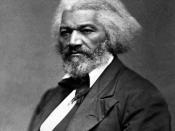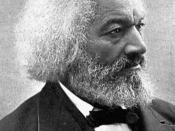Starting from scratch was no easy task for the adventure-seeking puritans that escaped to the new world looking for religious freedom and economic pursuits. Much manual labor needed to be preformed to sustain or even produce a surplus of various crops. The passage over to the new world was expensive and lot all people in England could afford the passage. People sought out individuals that were willing to go and help sustain and enhance colonial life but didn't have the funds for the passage. Indentured servants and eventually slaves became the primary source of labor in the colonial era. At first, all were indentured servants. During their time as servants, they were fed and housed. Afterwards, they would be given what were known as freedom dues, which usually included a piece of land and supplies, including a gun. Black-skinned or white-skinned, they became free. There are many differences and similarities between indentured servitude and slavery; consequently, ethnicity played an important roll in the execution of these systems that shaped colonial economic and social development.
Indentured servitude, which amounted to virtual slavery for the length of contract, was a primary source of labor in the colonies. Most emigrated from various parts of Europe and were looking to start a new life. This form of labor was contractual. Individuals who indentured themselves contracted with their employer or a ship's captain for the payment of passage and the provision of food, clothing and shelter. In return, the individuals provided themselves as a labor source, (Smith 112). Many were young adventure seeking males. Generally in their late teens and early twenties, they looked upon the new world for chances for success. Thousands of women also entered into these agreements and often worked off their debts as domestic servants. The endurance of the indenture was...


